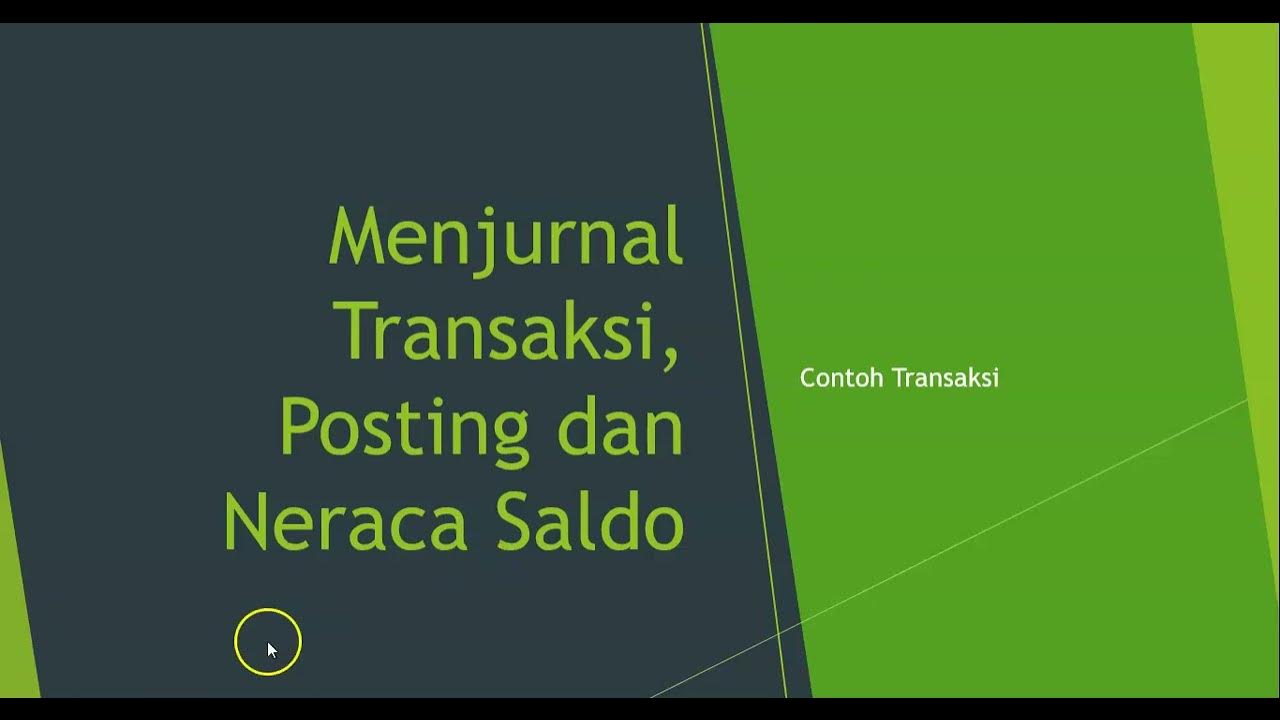How to Audit Cash | Part 3 of 3 | Bank Reconciliation, Deposits in Transit, and Outstanding Checks
Summary
TLDRIn this video, the host provides a comprehensive guide to auditing cash by explaining the key steps involved in reconciling a bank balance to the cash balance in the general ledger. The process covers verifying the bank balance through confirmations, handling deposits in transit, testing outstanding checks, and ensuring the final bank reconciliation matches the trial balance. With detailed instructions on how to test for existence and completeness, as well as completing audit workpapers, this video serves as an essential resource for anyone involved in cash audits.
Takeaways
- 😀 Confirm the bank balance by sending an audit confirmation, typically using confirmation.com, to ensure it matches the bank statement at period-end.
- 😀 🏦 Reconcile the bank statement to the general ledger (GL) cash balance at period-end to ensure accuracy and completeness of the financial records.
- 😀 📜 Always verify that the **bank reconciliation** matches the ending cash balance on the trial balance before proceeding with other tests.
- 😀 💵 Deposits in transit are payments that haven't cleared the bank yet. Ensure they are added to the bank statement balance when reconciling.
- 😀 ✅ To test **deposits in transit**, request a listing from your client, sample checks from that listing, and confirm that they cleared after the period-end.
- 😀 ✍️ For outstanding checks, request the subsequent bank statement and ensure that checks written before period-end but cleared after period-end are included in the outstanding checks list.
- 😀 📑 Always use the **completeness assertion** when testing for outstanding checks, to verify that the full listing is captured in the reconciliation process.
- 😀 🗂️ Perform a **subsequent bank statement review** to test both deposits in transit and outstanding checks by verifying dates and confirming transactions post period-end.
- 😀 ⚠️ Ensure that any discrepancies between the bank reconciliation and trial balance are resolved early, as this forms the foundation for the rest of the audit work.
- 😀 📝 Don’t forget to complete all the steps in the **Audit Procedure Steps (APS)** form to ensure every audit task for cash is accounted for.
- 😀 💡 The ultimate goal of auditing cash is to ensure that the bank reconciliation, deposits in transit, and outstanding checks are accurate, and the GL balance reflects the true financial position.
Q & A
What is the main goal when auditing cash?
-The main goal when auditing cash is to reconcile the bank statement balance at period end with the cash balance on the trial balance, ensuring both match and are accurately reported.
What are the key components involved in a bank reconciliation during a cash audit?
-The key components in a bank reconciliation are: 1) Bank balance at period end, 2) Deposits in transit, 3) Outstanding checks, and 4) Miscellaneous items (which should ideally be minimal).
How do auditors confirm the bank balance during the audit process?
-Auditors confirm the bank balance by sending a confirmation request to the bank, either electronically via confirmation.com or through paper confirmations, asking the bank to verify the balance on the statement at period end.
What is the purpose of verifying deposits in transit during the audit?
-The purpose of verifying deposits in transit is to ensure that payments sent to the company before period end, but not yet cleared by the bank, are accurately included in the reconciliation.
What method do auditors use to test the existence of deposits in transit?
-Auditors test the existence of deposits in transit by sampling from the listing provided by the client, verifying that the payments were sent before the period end and didn’t clear the bank until after the period end, using subsequent bank statements.
What is the risk when auditing outstanding checks, and how is it mitigated?
-The risk with outstanding checks is the understatement of liabilities if some checks are not properly included. This is mitigated by testing the completeness of the outstanding checks listing by sampling checks that cleared after the period end from subsequent bank statements.
What action should an auditor take when reviewing outstanding checks?
-The auditor should request subsequent bank statements to identify checks that cleared after the period end, then sample those checks to verify if they were properly included or excluded in the outstanding checks listing.
Why is it important to ensure the bank reconciliation agrees with the trial balance?
-It is important because the bank reconciliation needs to match the trial balance's ending cash balance before any audit tests begin. If the reconciliation doesn't agree, the audit will be based on incorrect data.
What is the purpose of completing audit procedure work papers (APS form) during the audit?
-The purpose of completing APS forms is to ensure all required steps in the audit process are documented and performed, guaranteeing that the audit is thorough and meets the firm's standards.
What is the final formula for cash reconciliation in an audit?
-The final formula is: Bank balance at period end + Deposits in transit - Outstanding checks = Ending cash balance (as recorded in the General Ledger).
Outlines

This section is available to paid users only. Please upgrade to access this part.
Upgrade NowMindmap

This section is available to paid users only. Please upgrade to access this part.
Upgrade NowKeywords

This section is available to paid users only. Please upgrade to access this part.
Upgrade NowHighlights

This section is available to paid users only. Please upgrade to access this part.
Upgrade NowTranscripts

This section is available to paid users only. Please upgrade to access this part.
Upgrade NowBrowse More Related Video
5.0 / 5 (0 votes)





